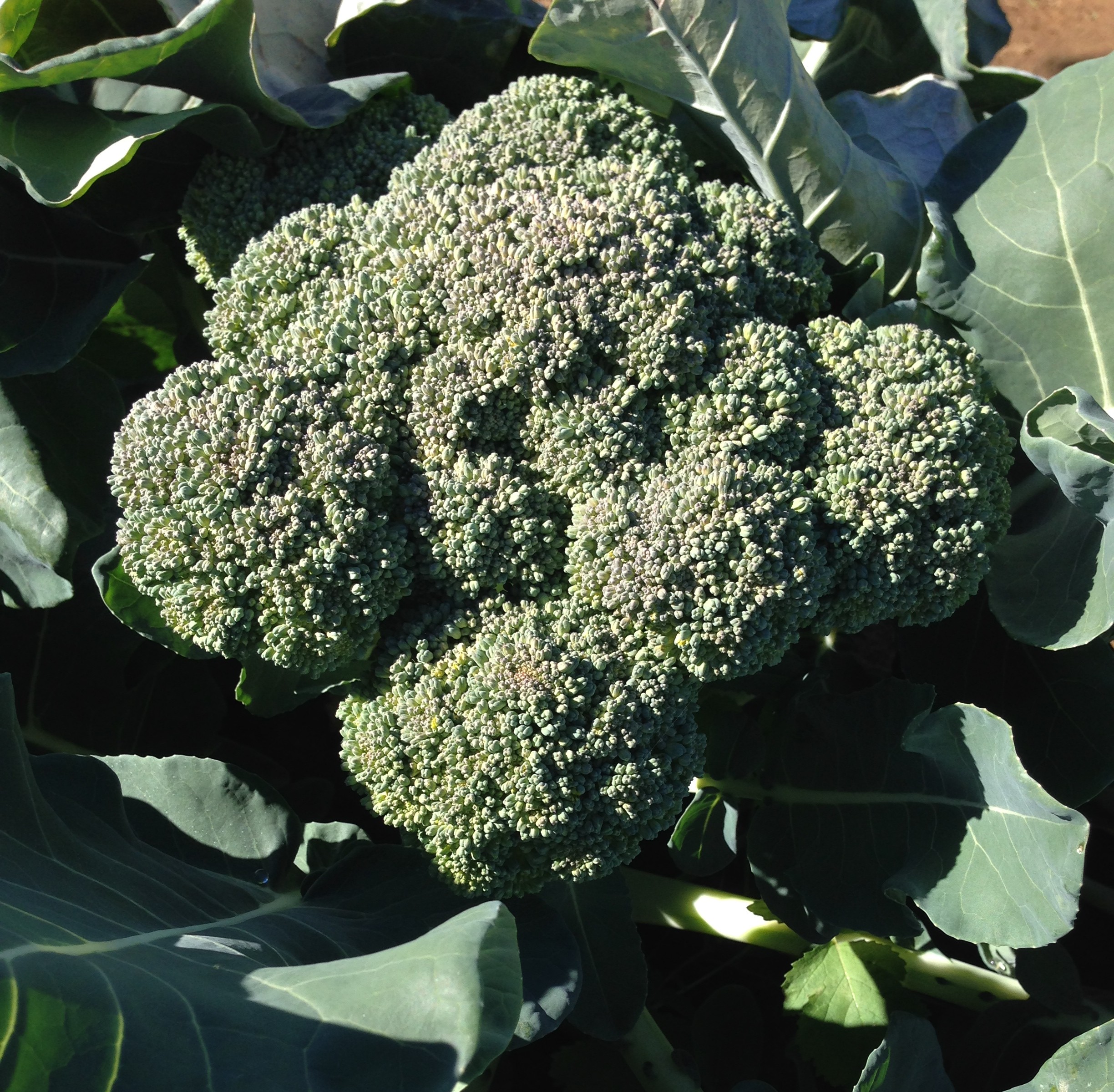
by Mary Salinas | Sep 2, 2014
Need some advice to get started with a fall garden? The horticulture agents of the Northwest Extension District are pleased to present an interactive video series for the beginning gardener.
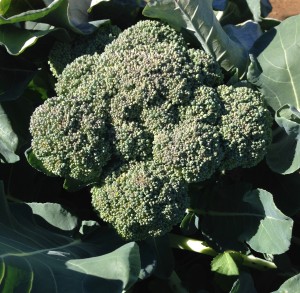
Broccoli, a popular winter vegetable. Photo by Mary Derrick, UF IFAS
The schedule is as follows:
September 9th – Starting a Home Vegetable Garden: Expectations, planning and site preparation
September 16th – Starting a Home Vegetable Garden: Tips to use whether you are starting with seeds or transplants
September 23rd – Tops and Bottoms for the Cool Season Garden: Cool season crops such as lettuce, broccoli, cabbage, chard, strawberries, onions, potatoes and carrots
Consult the list of Participating counties for the location nearest to you. The cost is $30 for an individual and $45 for a couple and covers all three sessions and informative handouts. All classes are held 6-7:30 p.m. Central time.
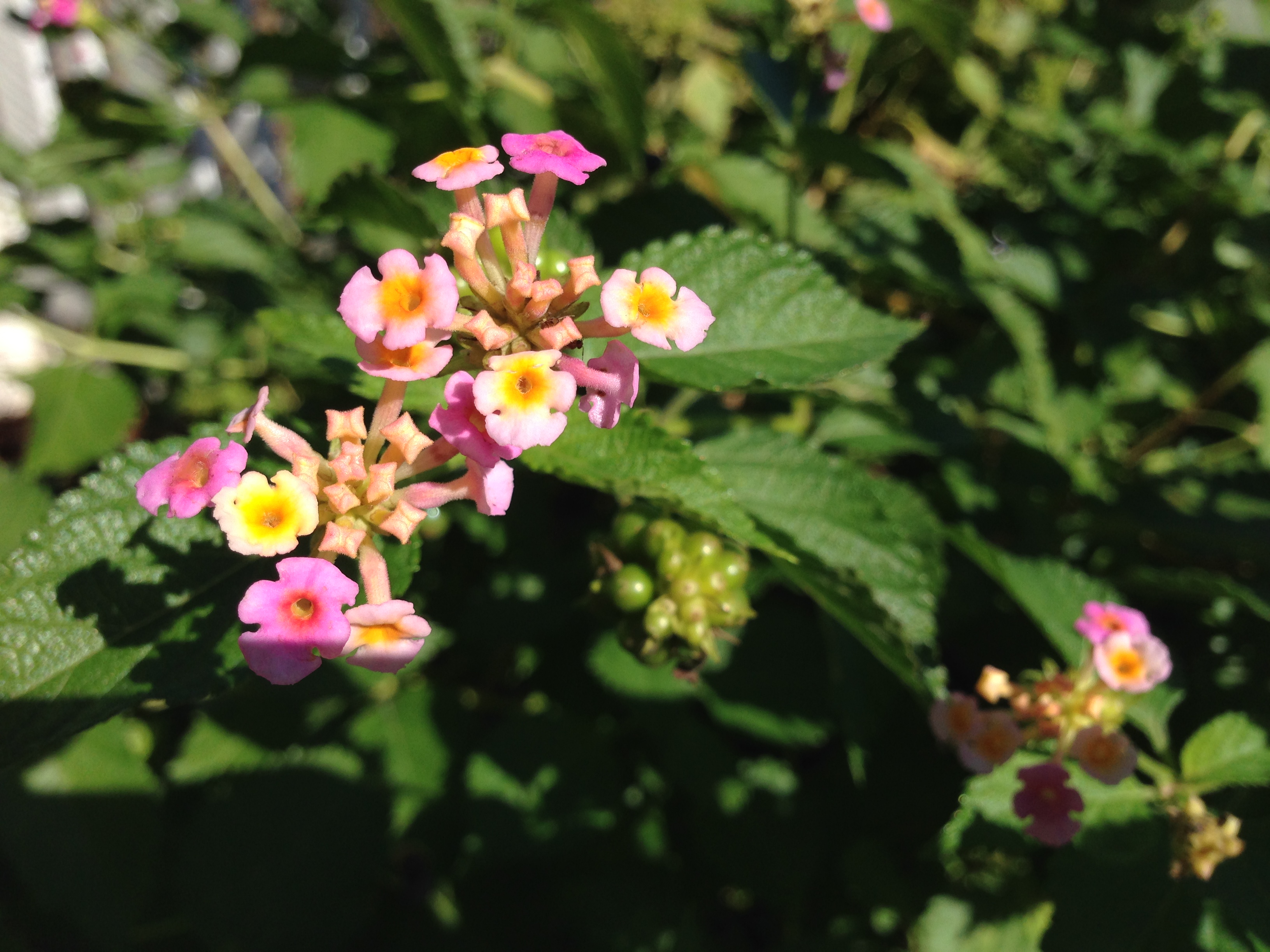
by Mary Salinas | Aug 19, 2014
Is your pet one of those that likes to nibble on or gobble down new plants in your home or landscape? If so, it would be wise to make sure that the new plants you introduce do not send you running with your pet to the vet. There are many common plants that can adversely affect the health of your cat or dog. Symptoms range from mild nausea and vomiting to death, depending on the plant species and the amount ingested.
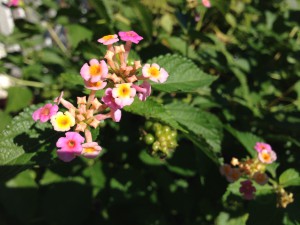
Lantana is toxic to cattle and horses as well as to pets. Photo credit: Mary Derrick, UF/IFAS Extension
This is a sampling of some common indoor plants that are toxic to pets: alocasia, amaryllis, Ti Plant, English Ivy, dieffenbachia, Chinese evergreen, philodendron, corn plant, cyclamen, desert rose, dracaena, peace lily, pothos, and schefflera.
Some landscape plants that may cause a problem include: azalea, bird of paradise, caladium, cape jasmine, Carolina jessamine, chrysanthemum, daffodil, day lily, kalanchoe, lantana, oleander, and sago palm.
For a comprehensive list visit the ASPCA website or The Humane Society website for more information and a comprehensive list.
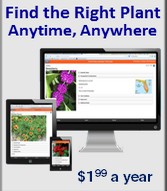
by Mary Salinas | Jul 15, 2014
We all seem to have this dilemma: A desire to re-landscape or just add a few plants to an area, but not knowing what would be the best choice. Plants need to be compatible with their location. The right plant should be chosen for the right place. Many have particular light, moisture and zone requirements in order to do their best. The ultimate size of the plant is also an important consideration; if you want to avoid constant pruning, choose plants that only grow to size you would like to ultimately have. Some great resources are provided below to get you the information you need.
 UF IFAS Extension has a brand new app for your mobile device or web! The app contains a database of over 400 Florida-friendly plants is searchable by plant name, type, shape, native status, light requirements and more. The yearly subscription is only $1.99 to have great info on the go.
UF IFAS Extension has a brand new app for your mobile device or web! The app contains a database of over 400 Florida-friendly plants is searchable by plant name, type, shape, native status, light requirements and more. The yearly subscription is only $1.99 to have great info on the go.
The downloadable 104-page Florida-friendly Landscaping Guide to Landscape Design and Plant Selection not only has photos and detailed information about plants by category, it also has great ideas on how to improve your landscape design! 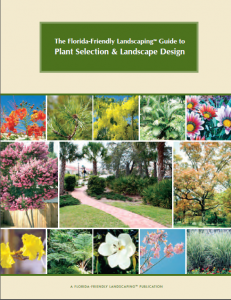
UF’s Florida Yards & Neighborhoods maintains a searchable Florida-friendly Plant Database. Make choices based on region, plant type, light and moisture quantity, soil texture salt tolerance.
For native plants, the Florida Association of Native Nurseries has two websites where you can find plants for your particular zone, plant community (like at the beach or in pine flatwoods), plant type and by wildlife usage. There is a site designed for nursery professionals that lets you find local wholesale growers and also a similar site for homeowners that has resources on where to find desired plants at local nurseries.
Speaking of native plants, the Florida Native Plant Society also has a searchable list of plants appropriate for your particular needs.
Gardening Solutions has lots of great information for lawn, landscape and garden by category, and it is easily accessed.
Happy Gardening!
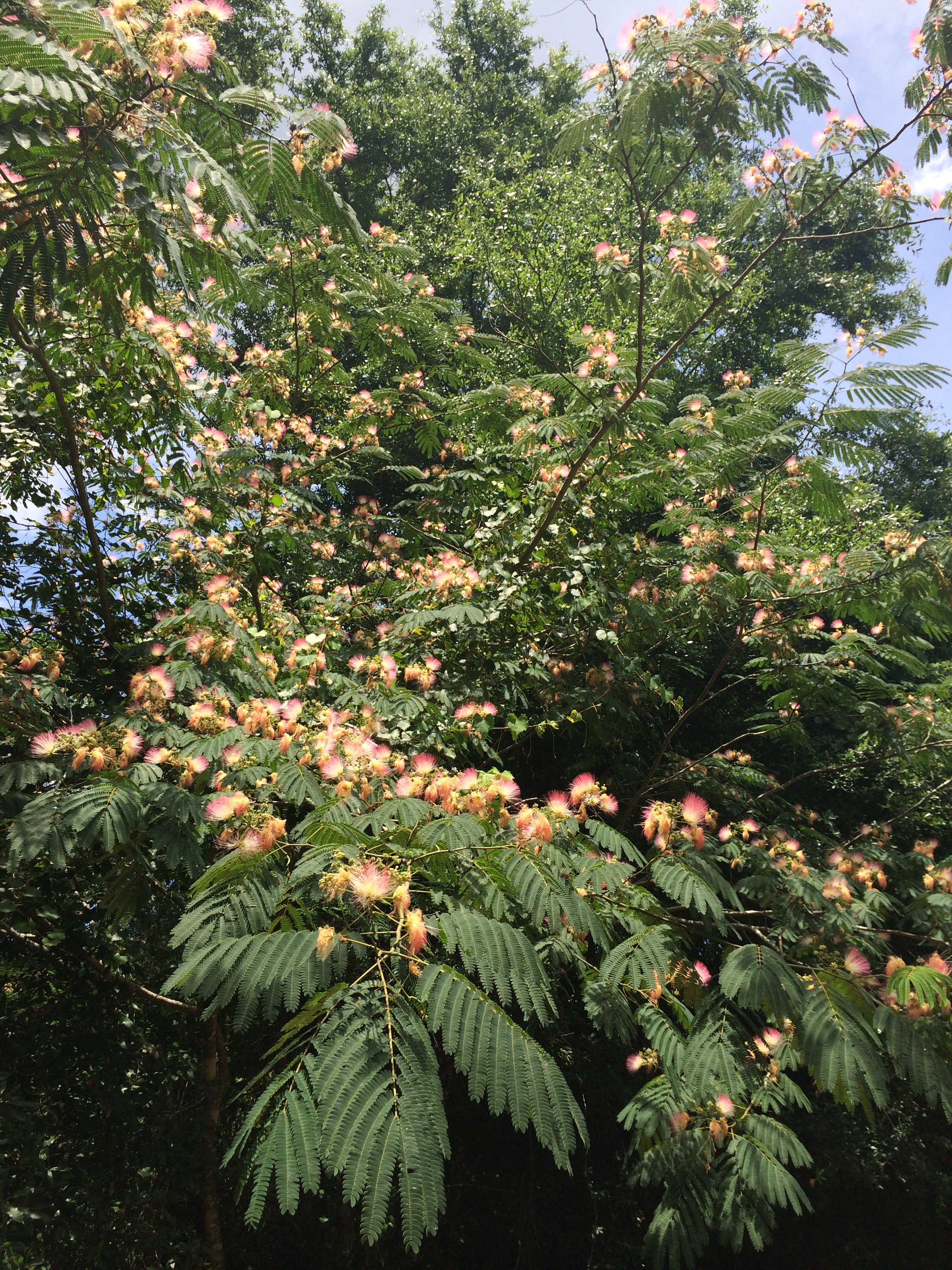
by Mary Salinas | Jun 10, 2014
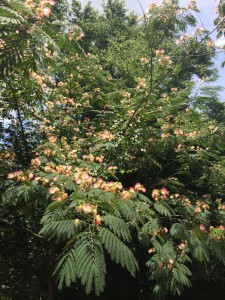
A mimosa tree invader in a natural area. Photo by Mary Derrick, UF IFAS.
All along the roadsides and in home landscapes this time of year, a profusion of fluffy pink blossoms are adorning trees known as Mimosa, or Albizia julibrissin. This native of China was introduced to home landscapes in this country in the 1700’s to enjoy the fragrant, showy flowers and fine, lacy foliage. However, there is a dark side to this lovely tree. After blooming, it produces an abundance of pods each containing 5 to 10 seeds. Seeds can be spread by wildlife and water; this is evidenced by the appearance of mimosa trees along the roadways, streams and in our natural areas. The seeds can also remain dormant for many years, allowing seedlings to keep sprouting up long after the mother tree is gone.
Mimosa has been categorized as an invasive exotic plant in Florida as it has not only naturalized, but is expanding on its own in Florida native plant communities. This expansion means that our native plants in natural areas get crowded out by the mimosa as it reproduces so prolifically.
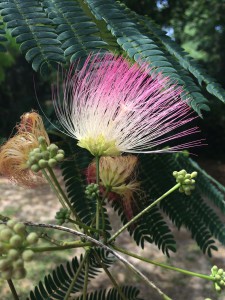
Bloom and foliage of the invasive mimosa tree. Photo by Mary Derrick, UF IFAS.
[important]The Florida Exotic Pest Plant Council (FLEPPC) publishes a list of non-native plants that have been determined to be invasive. Click here for the most recent 2013 list![/important]
The first step in controlling this pest plant is to remove existing plants in the landscape. Cutting it down at soil level and immediately painting the stump with a 25% solution of glyphosate or triclopyr should do the trick. Other details and control methods can be found here.
There are some native trees that make excellent alternatives to Mimosa such as fringe tree (Chionanthus virginicus), silverbell (Halesia carolina) and flowering dogwood (Cornus florida).
For more information:
Albizia julibrissin: Mimosa
UF IFAS Center for Aquatic and Invasive Plants: Mimosa
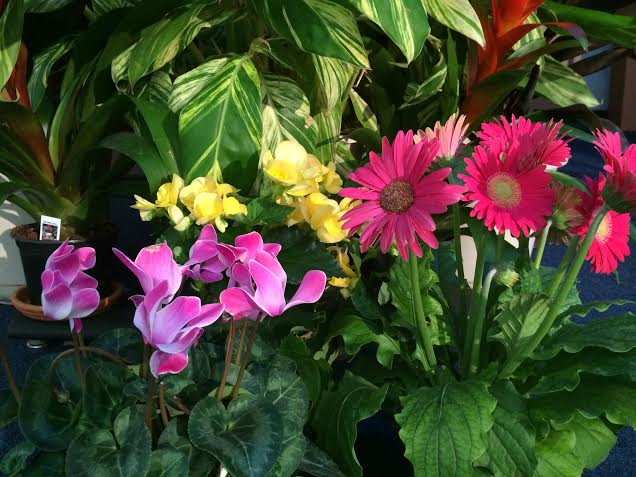
by Mary Salinas | May 13, 2014
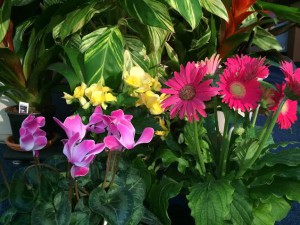
Flowering Houseplants. UF IFAS photo by Mary Derrick.
Plants add color, interesting textures and, of course, beauty to our indoor living environments. The air is freshened with the oxygen they provide.
Keep them healthy by watering correctly. Plants have differing water requirements so take a moment to look up some good research-based information on your particular plants and find out what kind of watering regime is best for them. For most houseplants, it’s time to water when the top inch or so of soil is dry to the touch. Some do best when they dry considerably before watering, like succulents, while others, like cineraria, like to stay evenly moist. It may help to group your plants by their water requirements so you can better remember and manage their watering needs.
When it is time to water, make sure to water thoroughly so that excess water drains from the pot. There are several really good reasons to follow that practice. First, a thorough watering allows all the soil and roots to be moistened and you avoid having dry spots in the soil. Also, when the excess water drains, it takes with it the excess salts from fertilizers. When excess salts build up over time, the roots can be damaged and the plant can eventually die. One of the first plant symptoms is brown, dead tips of the leaves. A definitive sign of excess salt is a white mineral build up around the inside edges of the pot or on the surface of the soil. If you already have a salt build-up, you can water heavily a few times to help leach the salts or re-pot your plant with some fresh potting soil.
One last tip – once you water your plants, don’t let the pots and the roots sit in water. Dump out any standing water.
For more information, please see:
Solutions for Your Life: Houseplants
Gardening Solutions: Salt Build-up in Houseplants
Virginia Extension: Indoor Plant Culture











